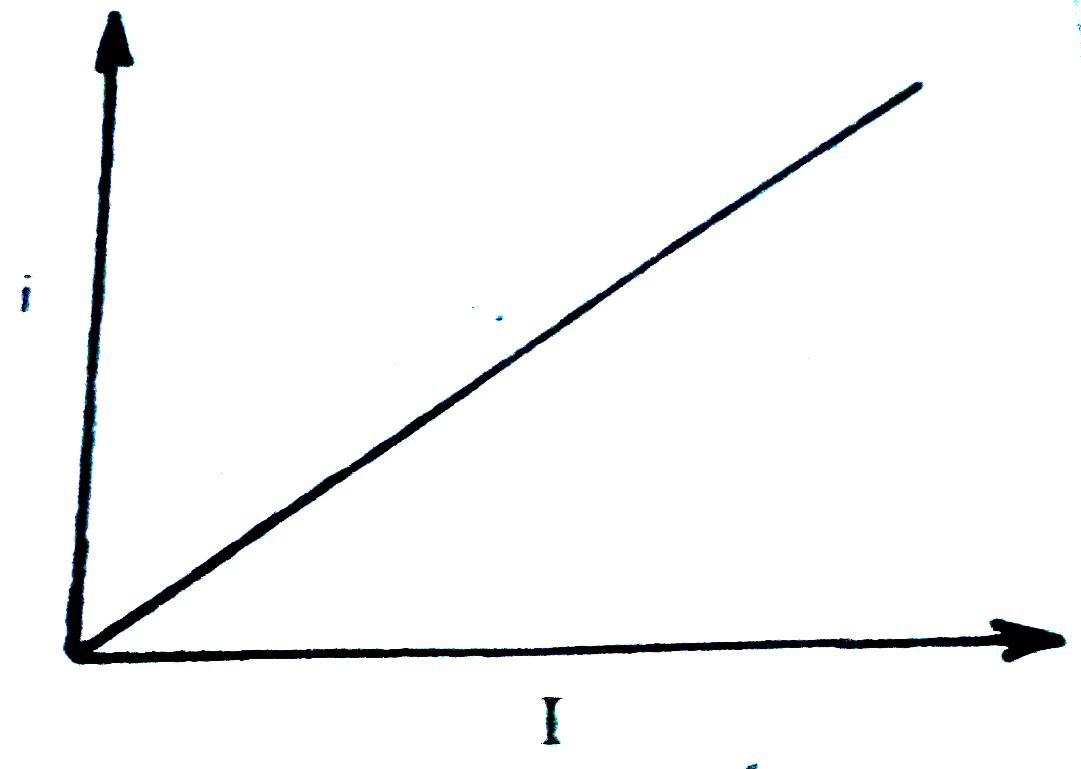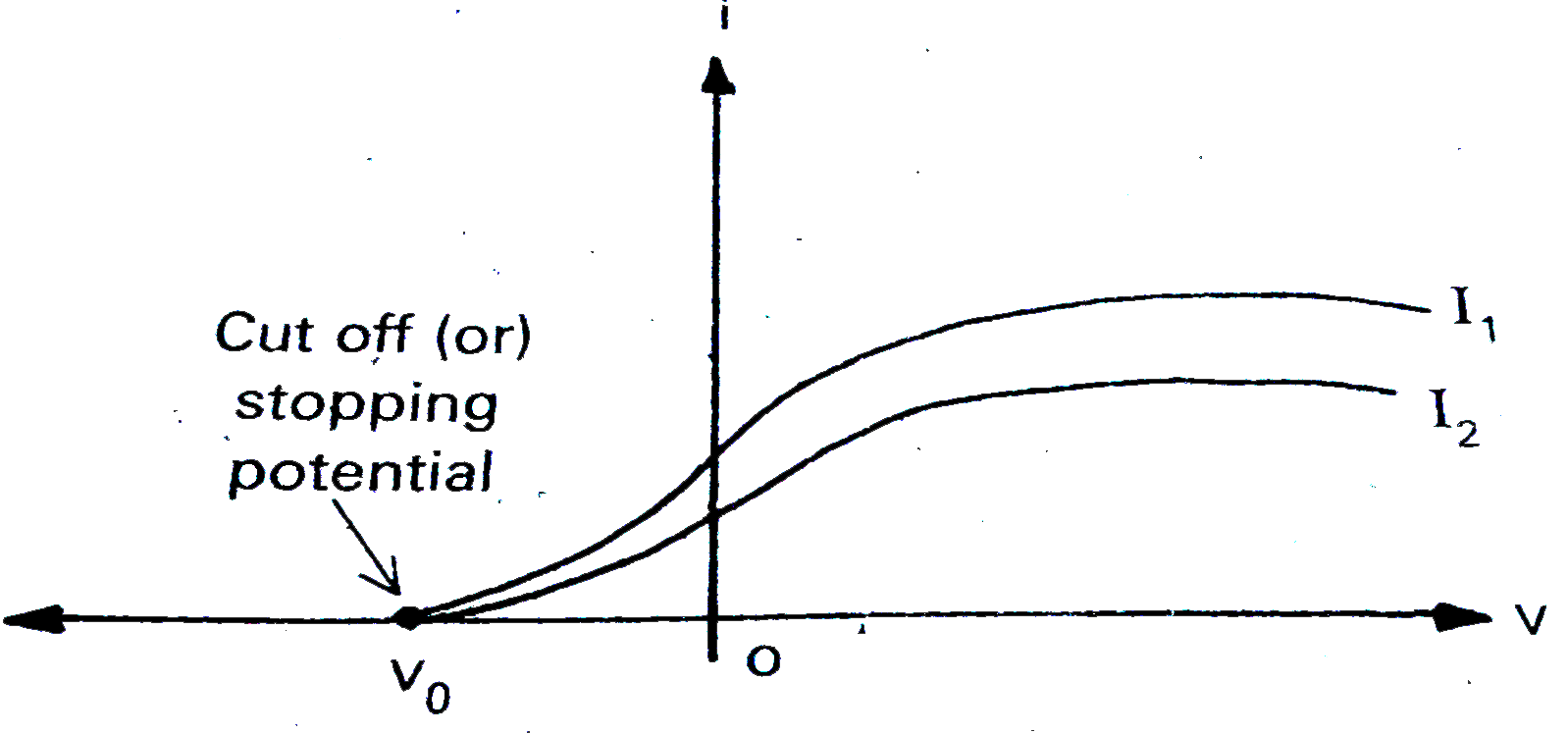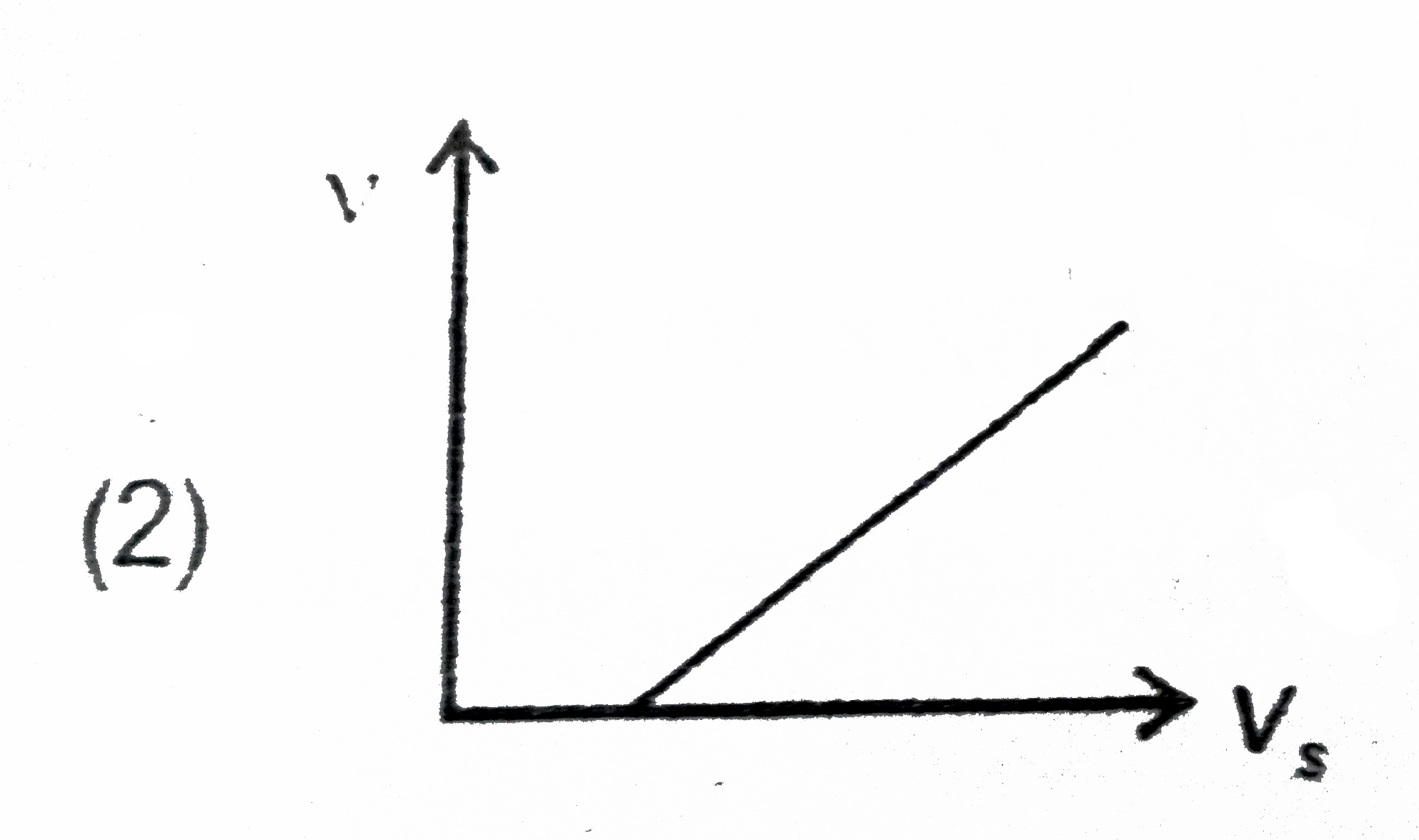How did Einstein's photoelectric equation explain the effect of intensity and potential incident on photoelectric current ? How did this eqaution account for the effect of frequency of incident light on stopping potential ?
Text Solution
(1) Einstein postulated that a beam of light consists of small energy packets called photons or quanta.
(2 ) The energy of photon is E = hv . Where ' h ' is Planck's constant , v is frequency of incident light ( or radiation ) .
(3 ) If the absorbed energy of photon is greater than the work function (ϕ0=hv0) , the electron is emitted with maximum kinetic energy i.e, Kmax=12mv2max=eV0=hv−ϕ0 . This equation is known as Einstein's photoelectric equation .
(4) Effect of intensity of light on photoelectric current :
When the intensity (I) of incident light , with frequency greater than the threshold frequency (v0>v0) is increased then the number of photoelectrons emitted decreases i.e the value of photoelectric current (i) increases ie. i∝I . ,
(5 ) On increasing the positive potential on collecting electrode , the photoelectric current increases. At a particular positive potential , the photocurrent becomes maximum which is known as saturated current .
(ii) On increasing the value of negative potential the value of photoelectric current becomes zero. This is known as stopping potential (v0)
(iii) Stopping potential does not depend on the intensity of incident light . On increasing intensity , the value of saturated current increases, whereas the stopping potential remains unchanged.
(6) The effect of frequency of incident radiation on stopping potential :
On increasing the frequency of incident light, the value of stopping potential goes on increasing gradually as shown in fig . That means kmax increases eV0 also increases .
(7) From the graph , we note that
(i) For a given photosensitive metal , the cut off potential (v0) varies linearly with the frequency of the incident rediation .
(ii) For a given photosensitive metal, there is a certain minimum cut off frequency v0 (called threshold frequency ) for which the stopping potential is zero .
(8) From the graph we note that ,
(i) The value of cut - off potential is different for radiation of different frequency .
The value of stopping potential is more negative for radiation of higher incident frequency .
( 9) From above experiments , it is found that , if the incident radiation is of higher frequency than that of threshold frequency , the photoelectric emission is possible .




|
Topper's Solved these Questions
- DUAL NATURE OF RADIATION AND MATTERBOOK - VIKRAM PUBLICATION ( ANDHRA PUBLICATION)CHAPTER - DUAL NATURE OF RADIATION AND MATTEREXERCISE - TEXTUAL EXERCISES
34 Videos
- DUAL NATURE OF RADIATION AND MATTERBOOK - VIKRAM PUBLICATION ( ANDHRA PUBLICATION)CHAPTER - DUAL NATURE OF RADIATION AND MATTEREXERCISE - ADDITIONAL EXERCISES
27 Videos
- DUAL NATURE OF RADIATION AND MATTERBOOK - VIKRAM PUBLICATION ( ANDHRA PUBLICATION)CHAPTER - DUAL NATURE OF RADIATION AND MATTEREXERCISE - SHORT ANSWER QUESTIONS
4 Videos
- CURRENT ELECTRICITY BOOK - VIKRAM PUBLICATION ( ANDHRA PUBLICATION)CHAPTER - CURRENT ELECTRICITY EXERCISE - ADDITIONAL EXERCISES
22 Videos
- ELECTRIC CHARGES AND FIELDSBOOK - VIKRAM PUBLICATION ( ANDHRA PUBLICATION)CHAPTER - ELECTRIC CHARGES AND FIELDSEXERCISE - DAM SURE LAQ
1 Videos
Similar Questions
Knowledge Check
Explain photoelectric effect Explain the effect of increase of intensity of incident radiations on photoelectrons emitted by a photo-tube.
AincreasesBdecreasesCremains constantDfirst decrease and then increase constantGraph of incident freuency with stopping potential in photoelectric effect is
A B
B C
C D
D
The magnitude of stopping potential for the photoelectric effect is
Adirectly proportional to the intensity of incident light.Binversely proportional to the intensity of incident light.Cdirectly proportional to the frequency of incident light.Dinversely proportional to the frequency of incident light.
Graph of incident freuency with stopping potential in photoelectric effect is
View SolutionWhat is the effect of decrease in frequency of incident radiation on the stopping potential in photoelectric emission?
View SolutionWhat is photoelectric effect? Mention the Einstein's photoelectric equation.
View SolutionThe graph between stopping potential and intensity of light in photoelectric effect is
View SolutionIn photoelectric effect, stopping potential depends on
View Solution
